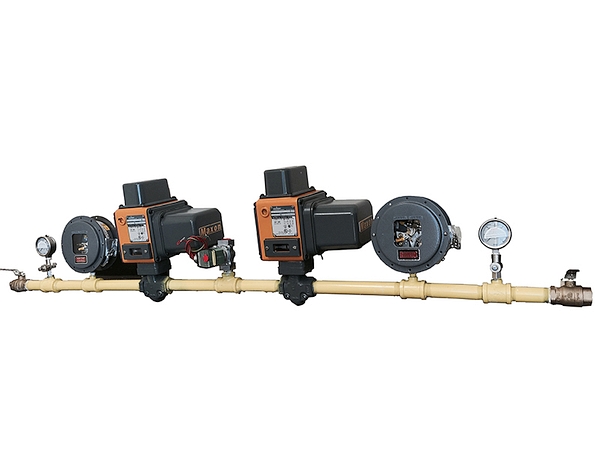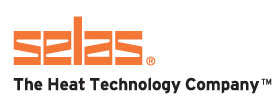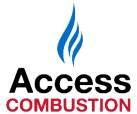High Pressure Gas Pipe Train

What is a Gas Train?
Gas Train is the general term used to describe the safety valve section of the fuel delivery system. It does not specify a particular arrangement.
A Gas Pipe Train might include the following:
Valve Proving System (VPS)
A device designed to test leakage in the seats of two valves piped in series when the valves are closed. Two methods are commonly used:
In one method, a device pumps a small amount of fuel gas from upstream into the first valve, pressurizing the space between the valves higher than the upstream pressure, then waiting for a specific amount of time. If the pressure remains constant, both valve seats are acceptable. If the gas pressure drops, one or both of the valve seats is leaking.
In another method, the valves are opened and closed in series, first the upstream valve is closed with the downstream valve open. If the pressure does not rise, the upstream valve has passed this test. Next, the downstream valve is close and the upstream valve is opened momentarily. The pressure must remain, or the downstream valve has failed this test.
Emergenchy Shutoff Valve
This is a valve removes the fuel supply from a system in the case of an emergency. In most cases, this function is handled by the Equipment Isolation Valve. In those instances, the EIS must also meet the requirement for both types of valve function.
This valve is the first device after the tap from the building fuel supply system. It often serves as the emergency shutoff valve as well. See above for more info.
Must be located downstream of the sediment trap and upstream of all other components. Gase filters are generally preferred as they provide better removal of fine particluate contaminants than strainers.
High Fuel Pressure Switch
Must shut down or prevent the ignition of the system if the maximum fuel pressure is exceeded. Must be located after the final fuel pressure regulator.
Low Fuel Pressure Switch
Must shut down or prevent ignition of the system if the minimum fuel pressure is not maintained.
Pressure regulator
Required when the fuel supply pressure is greater that the burner requires. A regulator is also recommended in any system where the pressure fluctuates, even when pressure reduction is not required.
Safety Valves
Power loss must cause the valve to close. At least two Safety Valves are required between the devices fuel supply and each burner.
Sediment Trap
A sediment trap or similar device for removal of sediment must be downstream of the EIV and upstream of all other components. It must have a vertical leg at least as long as 3x the diameter of the pipe and an absolute minimum of 3 inches.
If you'd like more help determining components needed for your gas pipe train or fuel pipe train, please contact Thermal Equiment Systems, Inc.
Gas Train is the general term used to describe the safety valve section of the fuel delivery system. It does not specify a particular arrangement.
A Gas Pipe Train might include the following:
Valve Proving System (VPS)
A device designed to test leakage in the seats of two valves piped in series when the valves are closed. Two methods are commonly used:
In one method, a device pumps a small amount of fuel gas from upstream into the first valve, pressurizing the space between the valves higher than the upstream pressure, then waiting for a specific amount of time. If the pressure remains constant, both valve seats are acceptable. If the gas pressure drops, one or both of the valve seats is leaking.
In another method, the valves are opened and closed in series, first the upstream valve is closed with the downstream valve open. If the pressure does not rise, the upstream valve has passed this test. Next, the downstream valve is close and the upstream valve is opened momentarily. The pressure must remain, or the downstream valve has failed this test.
Emergenchy Shutoff Valve
This is a valve removes the fuel supply from a system in the case of an emergency. In most cases, this function is handled by the Equipment Isolation Valve. In those instances, the EIS must also meet the requirement for both types of valve function.
- It must be remotely located so that a fire or explosion will not prevent it from being activated
- It must be readily accessible. It must not be locked or obstructed.
- It must be clearly, visibly, marked. Often the handle servers this purpose, if the handle is permanently attached.
- If the handle is removable, it must be tethered to the pipe within 3 feet of the valve and it must be possible to close the valve without removing the handle from the tether.
- It must be possible to close and open the valve using no tools besides the handle.
This valve is the first device after the tap from the building fuel supply system. It often serves as the emergency shutoff valve as well. See above for more info.
- One is required per piece of equipment.
- Other devices may not connect between it and the equiment it covers.
- Every piece of heating equipment needs it's own
- Oil fired systems must have manual valves installed to avoid oil spillage during servicing.
- Readily accessible. Must not be locked away or obstructed.
- Must have visual indication permanently attached.
- Valve must work on a quarter turn with stops. The open position must be inline with the pipe and the closed position must be at a 90° angle to it.
- A removable handle must be mechanically incapable of being installed in the incorrect orientation.
- The valve must be able to be closed and opened without any tools besides the handle.
Must be located downstream of the sediment trap and upstream of all other components. Gase filters are generally preferred as they provide better removal of fine particluate contaminants than strainers.
High Fuel Pressure Switch
Must shut down or prevent the ignition of the system if the maximum fuel pressure is exceeded. Must be located after the final fuel pressure regulator.
Low Fuel Pressure Switch
Must shut down or prevent ignition of the system if the minimum fuel pressure is not maintained.
Pressure regulator
Required when the fuel supply pressure is greater that the burner requires. A regulator is also recommended in any system where the pressure fluctuates, even when pressure reduction is not required.
Safety Valves
Power loss must cause the valve to close. At least two Safety Valves are required between the devices fuel supply and each burner.
Sediment Trap
A sediment trap or similar device for removal of sediment must be downstream of the EIV and upstream of all other components. It must have a vertical leg at least as long as 3x the diameter of the pipe and an absolute minimum of 3 inches.
If you'd like more help determining components needed for your gas pipe train or fuel pipe train, please contact Thermal Equiment Systems, Inc.


















